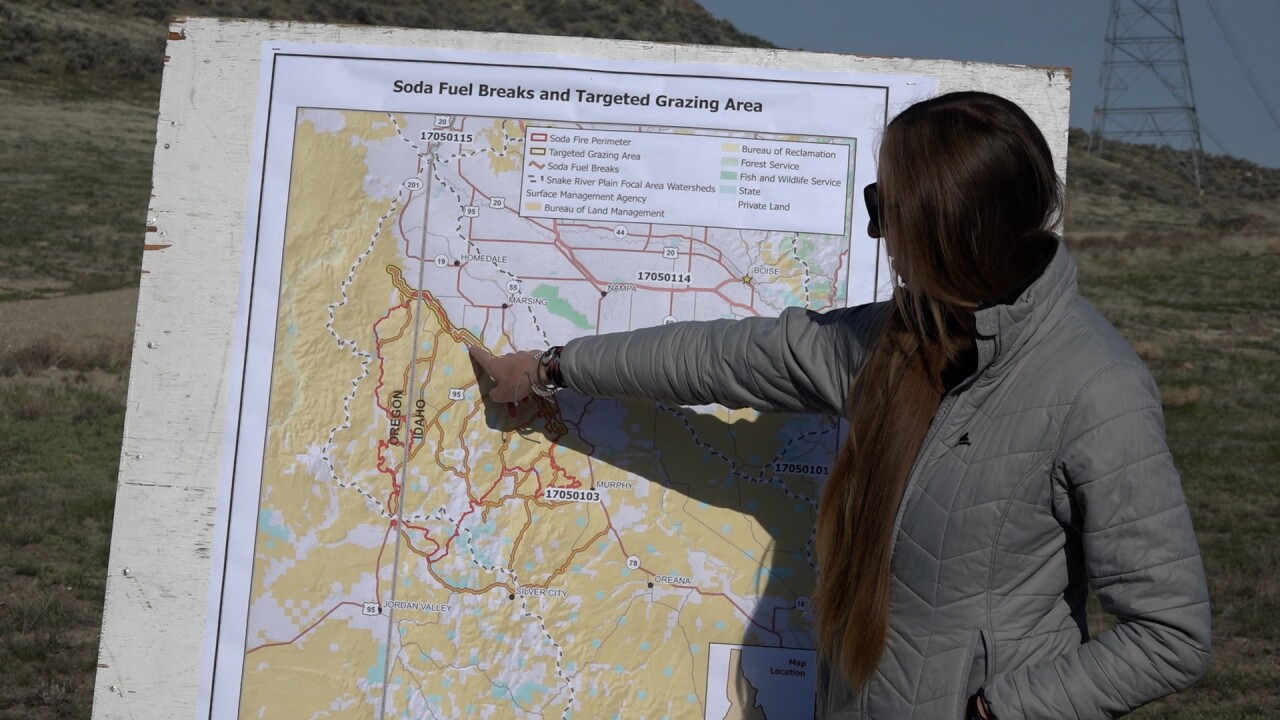MARSING, Idaho — The Soda Fire qualified as a mega fire as it scorched 280,000 acres (443 square miles) in the Owyhees back in 2015.
The fire spread so fast there wasn't anything firefighters could do to slow down the blaze, but this incident has spurred some major changes with the Bureau of Land Management and their partners in both government and the private sector.
"That was definitely a day in my career that I will never forget," said Tanya Thrift, the BLM Boise District Manager. "If you could say positive things have come out of the tragedy it really helped us reset some relationships."

The Bureau of Land Management has created 271 miles of fuel breaks across the landscape with the help of federal, state and local agencies to give firefighters a chance when the next fire happens.
"Fuel breaks really change the fire's behavior so you are not getting thirty foot flames when there is extreme fire behavior," said Thrift. "Those are really important anchor points that were not in place during the Soda Fire and they really would have changed our success and likely the size of this fire."

The BLM creates these fuel breaks by mowing, cutting brush, herbicides and also targeted grazing as the private sector has helped in this initiative whether it's the ranchers, land owners or recreational organizations that don't want to see another major fire.
"They need to be what firefighters need, we are going to put young men and women on the line to suppress fire," said Chris Cromwell, the BLM Fire Management Officer. "So we need to create areas where they can work safely, manage a fire, anchor into it and start their work."

Targeted grazing accounts for biggest percentage of fuel breaks on the Owyhee landscape as ten ranchers taken their cattle out in these designated areas that accounts for nearly 12,000 acres.
"Primarily they are focused on where we have cheatgrass and other invasives," said Thrift. "It's been a really great tool and due to their efforts they were nominated for and received a Bureau of Land Management stewardship award."
Today we check in with the BLM to see how the Soda Fire changed how they manage the Owyhee Front to protect against future wildfires. pic.twitter.com/2WIeYK1fmb
— Steve Dent (@idahodent) April 23, 2023
The Soda Fire was a habitat hard trigger as the fire burned sage grouse habitat, destroyed grazing lands and impacted recreation.
Sage grouse is an indicator of the health of the Owyhee Front as it has one of the most prominent populations in the northern Great Basin, so the effort by the BLM is not just about prevention, but also revitalization.

“The Owyhees are a special landscape it is not just important for wildlife habitat, but folks love to recreate out here," said Thrift. "We work with groups like Pheasants Forever, Rocky Mountain Elk Foundation and we all have a shared vision."
Since the Soda Fire the BLM and their partners have planted nearly two million seeds, hand planted 1.4 milliion sagebrush and they continue work to limit the spread of invasive plants that don't belong in the environment.
"We want to make sure this landscape is cared for," said Thrift. "We are working to make sure there is resilient habitat and that there continues to be economic activities such as livestock grazing and other permitted used that occur out here in the Owyhees."

Secretarial Order 3336 from the Department of the Interior provided funding which allowed the BLM to do these projects for five years following the fire, instead of the normal two-year limit.
The Bureau of Land Management also expects to receive more funding from the Inflation Reduction Act signed by President Biden in August of last year.




